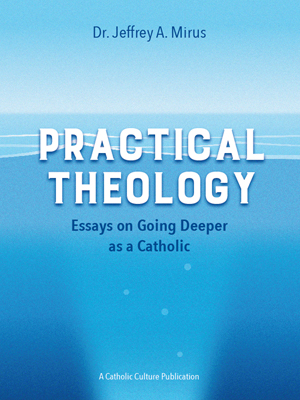Catholic Activity: Traditions related to Saint Joseph
Father Weiser explains the background of the feast of Saint Joseph in the Church, and gives short descriptions of traditions relating to this saint (such as "St. Joseph's Night" and "St. Joseph's Loaves") and customs from various countries, such as Valencia, Spain, northern Spain, and in parts of Italy.
DIRECTIONS
Up to the fifteenth century our Lord's foster father was not honored by a special feast of the Church, and people did not generally venerate him, although many ancient Fathers and writers mentioned him with reverence and high regard. It was only at the time of the Crusades that a practice of private devotion to Saint Joseph spread from the Eastern Churches into Europe. This devotion was greatly encouraged by some saints of the twelfth, thirteenth, and fourteenth centuries, especially Saint Bernard (1153), Saint Thomas Aquinas (1274), and Saint Gertrude (1310).
At the end of the fourteenth century the Franciscans, and soon afterward the Dominicans and Carmelites, introduced a Feast of Saint Joseph into their calendars. Finally, under Pope Sixtus IV an annual feast of the Saint was established on March 19 for the whole Church. It was, however, a feast of the lowest rank (simplex), imposing no obligation on the clergy to celebrate it. During the fifteenth and sixteenth centuries many religious orders and some national rulers, especially the Hapsburgs of Austria and Spain, appealed to the popes to raise the feast in rank and make it a prescribed holyday. Accordingly, Pope Gregory XV made it in 1621 a holyday of obligation. Pius X in 1911 rescinded the obligation of attending Mass, though it was later restored by the new Code of Canon Law in 1918.
In a short time the veneration of the Saint quickly and enthusiastically spread through all Catholic nations. Saint Teresa (1582), who had a special devotion to him, inspired the reformed Carmelites to establish a feast of the "patronage" of Saint Joseph, which was annually celebrated by the order on the third Sunday after Easter. This feast was extended in 1847 to the whole Church. In 1870 Pope Pius IX solemnly declared Saint Joseph as the official patron of the universal Church. In 1956 the feast of Saint Joseph's patronage was replaced by a feast of "Saint Joseph the Worker," to be celebrated annually on May 1.
The popular patronage of Saint Joseph is universal in scope. The words of the Egyptian Pharao, "Go to Joseph" (Gen. 41, 55), were applied to him. Filled with affection, love, and confidence, the faithful turned to him in all their temporal and spiritual needs. Every detail of his life gave rise to a special patronage. He is the patron of tradesmen and workers, of travelers and refugees, of the persecuted, of Christian families and homes, of purity and interior life, of engaged couples, of people in temporal distress (food, home, clothing, sickness, etc.), of the poor, aged, and dying.
It was a widespread custom in past centuries for newly wed couples to spend the first night of matrimony (St. Joseph's Night) in abstinence and to perform some devotion in honor of Saint Joseph that he might bless their marriage. Small round breads (St. Joseph's loaves; fritelli) are baked and eaten in many sections of Europe on March 19 to honor the heavenly "bread father." From the seventeenth century on it was customary to have a statue of the Saint on the table during the main meal and to "serve" it generous portions which afterward were given the poor.
In northern Spain it is an ancient tradition for people to make a pilgrimage to a shrine of Saint Joseph on March 19 and there to have a special repast after the devotions. This meal consists of roast lamb, which is eaten, picnic style, outside the shrine in the afternoon (Merienda del Cordero; Repast of the Lamb). For this occasion the faithful who make the pilgrimage and then partake of the meal are dispensed from the law of Lenten fast.
In the region of Valencia on the east coast of Spain a strange and interesting tradition developed — the burning of fires in honor of Saint Joseph. It is said to have been started by the carpenters in past centuries, when they cleaned their workshops before March 19 and burned all the litter on the evening of their patron's feast. Today committees are established which collect and exhibit at street crossings structures made of wood by boys and men during the weeks before the feast. These structures represent houses, figures, scenes, many of them symbolic of some political event of the past year. They are admired and judged by the people, and on the eve of Saint Joseph's Day the best one receives a prize and is put aside. All the others are burned in joyful bonfires. Music, dancing, and fireworks (traca) are a part of this celebration in honor of Saint Joseph.
In some parts of Italy ancient nature lore rites are still performed on Saint Joseph's Day, the "burial of winter" for instance, which is done by sawing a symbolic figure (scega vecchia) in two. In central Europe the day is celebrated by farmers as the beginning of spring. They light candles in honor of the Saint, put little shrines with his picture in their gardens and orchards, and have their fields blessed by the priest.
LITURGICAL PRAYER: Assist us, O Lord, we beseech Thee, by the merits of the Spouse of Thy most holy Mother, that, what of ourselves we are unable to obtain, may be granted us by his intercession.
Activity Source: Holyday Book, The by Francis X. Weiser, S.J., Harcourt, Brace and Company, Inc., New York, 1956







